Buttermilk Fried Chicken Tenders
This post may contain affiliate links. Read my full disclosure policy.
One of my most popular recipes, these chicken tenders are marinated in seasoned buttermilk and pan-fried to crispy, crunchy perfection.
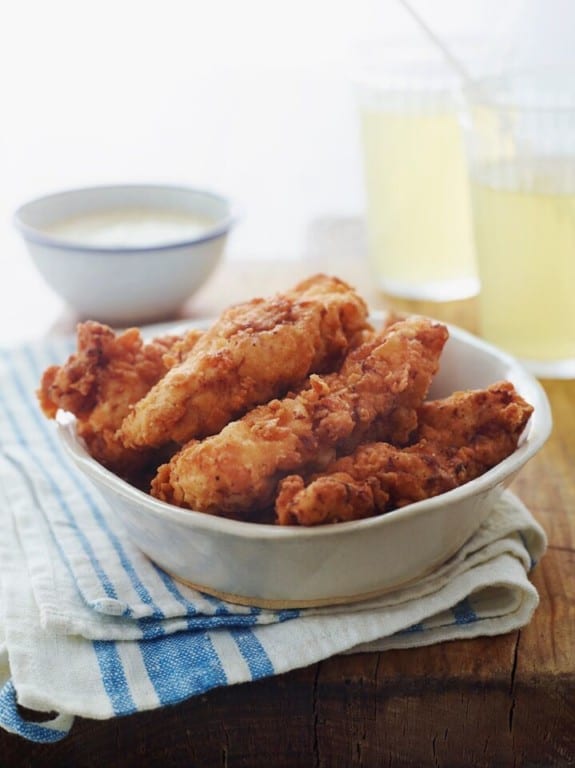
Photo by Alexandra Grablewski (Chronicle Books, 2018)
Like most kids, my daughter prefers “kid food” to “grown-up food” any day of the week. Occasionally, it works to my advantage—a trip to McDonald’s makes excellent bribery—but most of the time I’m just dealing with a picky eater. Rather than desperately trying to coax her into eating dinner every night, sometimes I just make her favorites. These chicken tenders, marinated in seasoned buttermilk and pan-fried to crispy, crunchy perfection, are at the top of her list. They’re delicious plain, dipped in honey mustard sauce, or perched on top of a salad. And they’re not just for picky kids—everyone loves them.
What you’ll need To Make Buttermilk Fried Chicken Tenders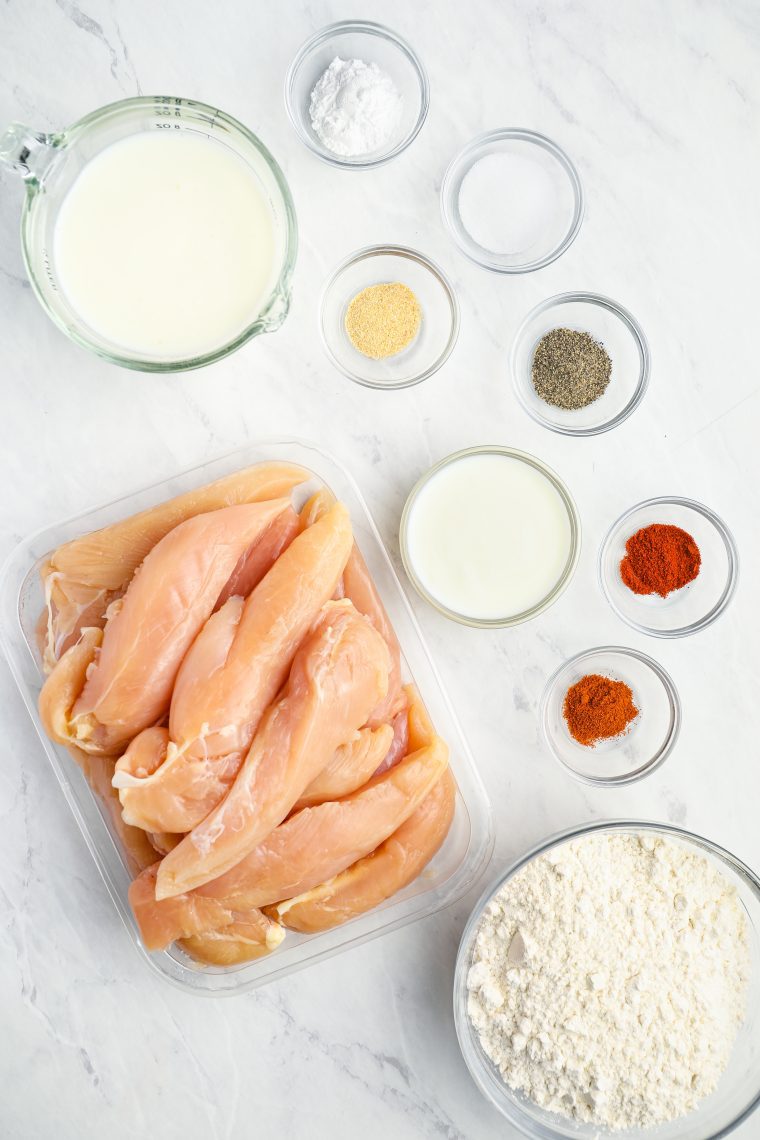
Step-by-Step Instructions
To marinate the chicken: In a large sealable bag, combine the chicken tenders with the buttermilk, paprika, garlic powder, cayenne pepper, and salt. Seal the bag tightly and massage the chicken until it is evenly coated with buttermilk and seasoning.
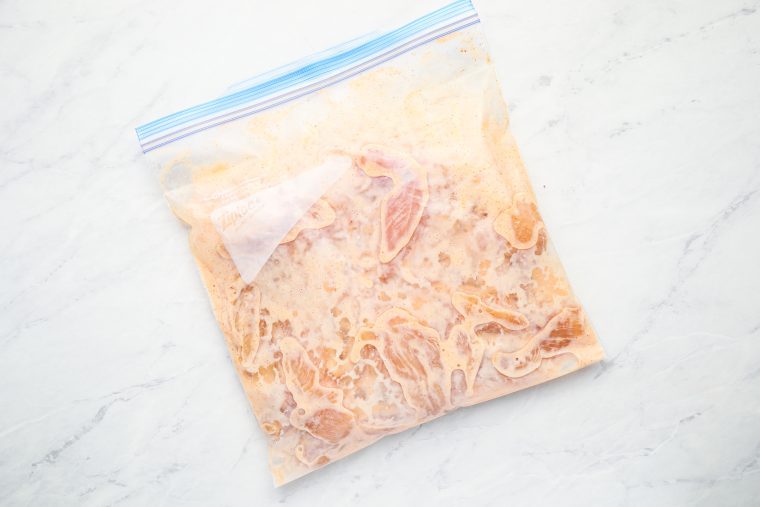
Place in a bowl (in case of leakage) and refrigerate for at least 4 hours or up to 24 hours.
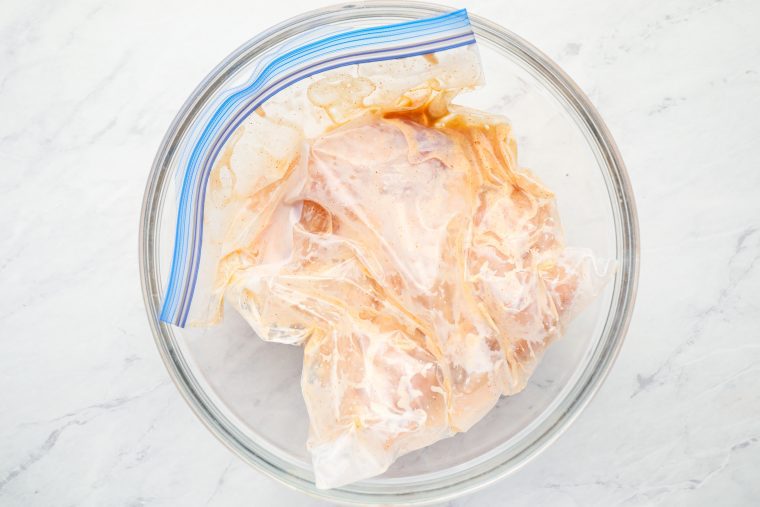
When you’re ready to cook them, make the breading: In a large bowl, combine the flour, baking powder, salt, pepper, garlic powder, and paprika.
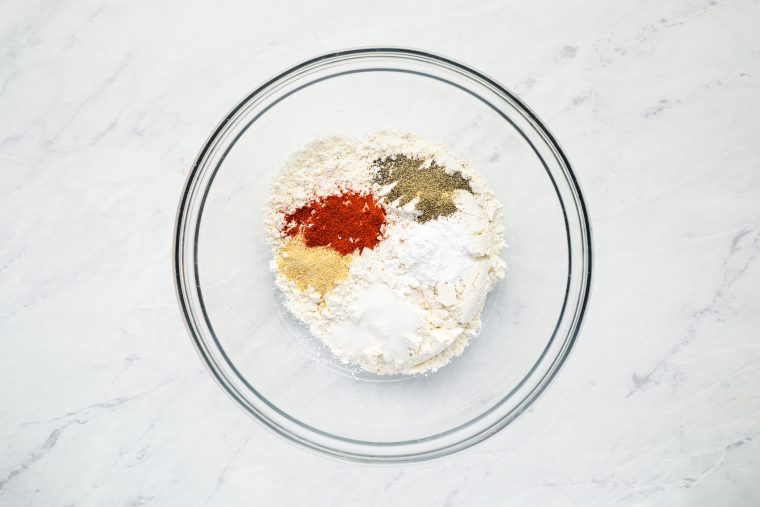 Whisk until well blended.
Whisk until well blended.
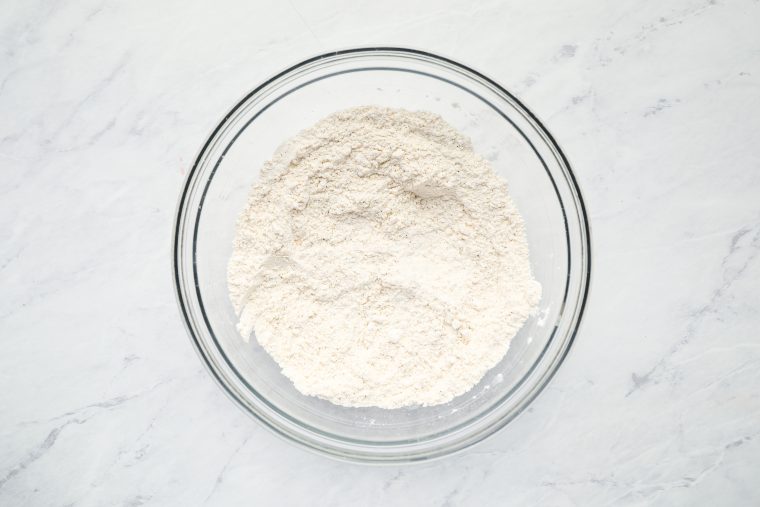 Add the buttermilk and stir with a fork until the mixture is evenly clumpy.
Add the buttermilk and stir with a fork until the mixture is evenly clumpy.
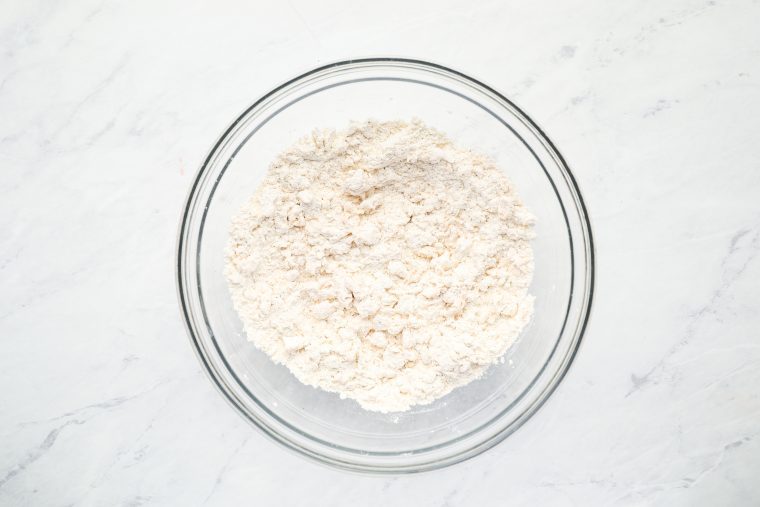 Remove the chicken tenders from the marinade a few at a time and toss into the breading mixture.
Remove the chicken tenders from the marinade a few at a time and toss into the breading mixture.
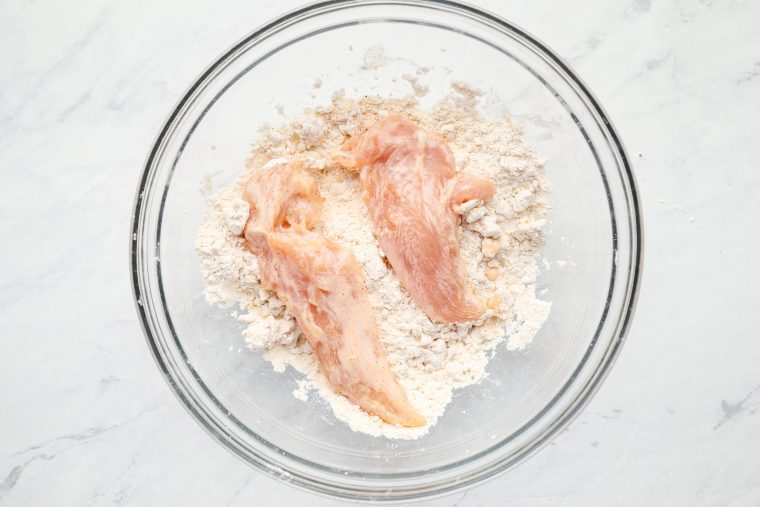
Be sure to press the chicken firmly into the breading so clumps adhere to the meat. (It’s a messy job: use one hand to remove the wet tenders from the bag and the other to toss in the breading.)
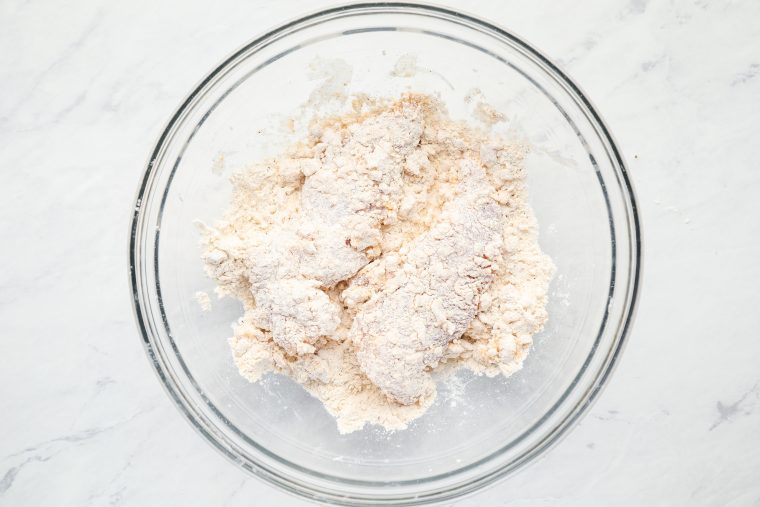 Set breaded tenders on a foil-lined baking sheet.
Set breaded tenders on a foil-lined baking sheet.
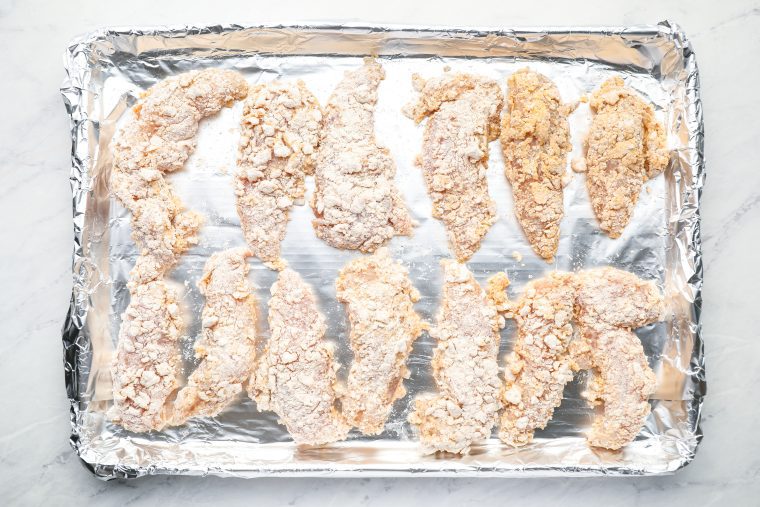
To fry the chicken: Line a baking sheet with a few layers of paper towels and set next to the stove. Add oil to a large, high-sided pot until the level reaches about 3/4-inch. Heat over medium-high heat until oil is shimmering (about 350°). (If a cube of bread sizzles when you drop it in, it’s ready.) Using tongs, place several chicken tenders in the hot oil without crowding the pan. Cook until golden brown on the bottom side, a few minutes, then flip and cook until the second side is also golden, a few minutes more.
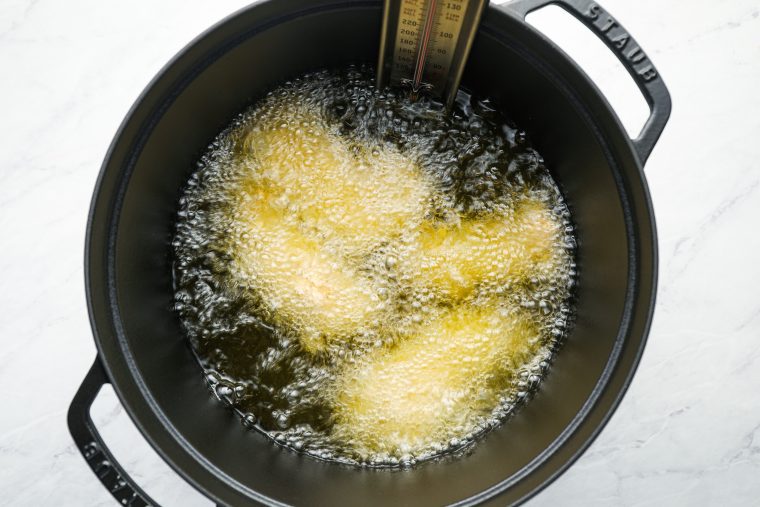 Set the cooked tenders on the paper towel-lined baking sheet to drain.
Set the cooked tenders on the paper towel-lined baking sheet to drain.
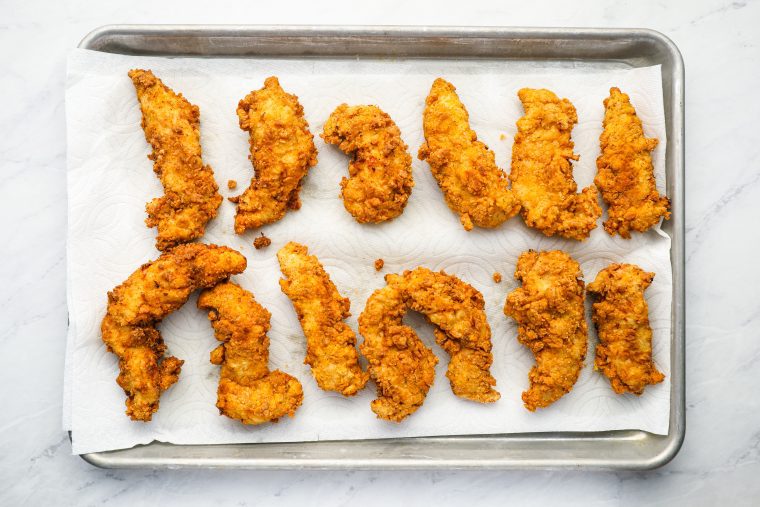 Fry remaining tenders in batches adjusting the heat as necessary (if the tenders are browning too fast, lower the heat). Serve hot with honey mustard sauce.
Fry remaining tenders in batches adjusting the heat as necessary (if the tenders are browning too fast, lower the heat). Serve hot with honey mustard sauce.
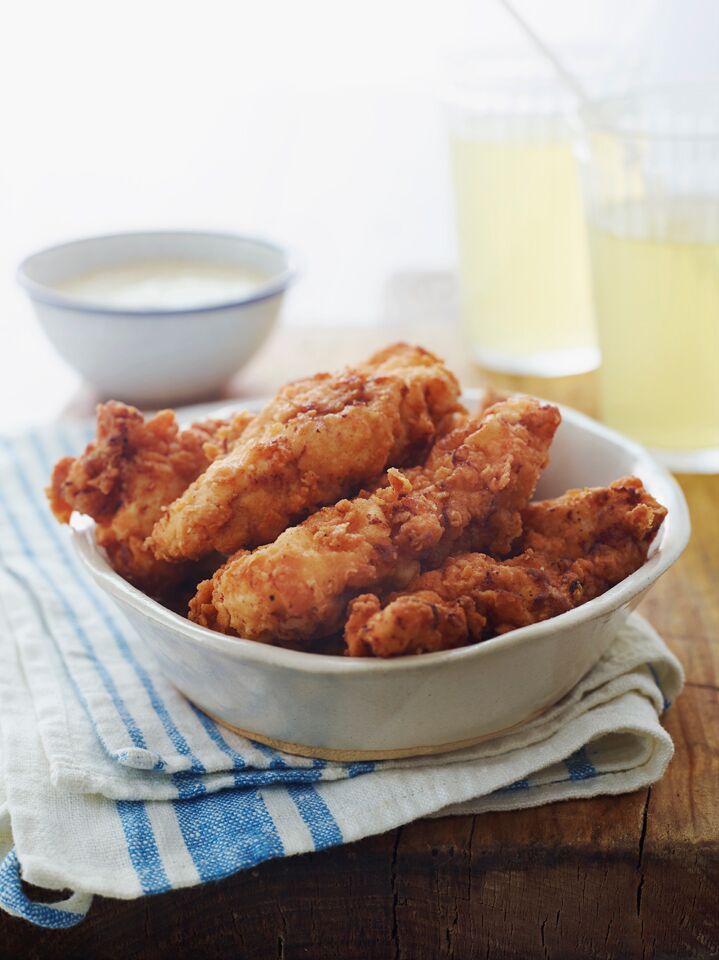
Photo by Alexandra Grablewski (Chronicle Books, 2018)
You may also like
- Pecan Crusted Chicken Tenders with Honey Mustard Sauce
- Easy Chicken Parmesan
- Parmesan Crusted Chicken
- Fried Chicken Sandwiches
- Chicken Schnitzel
- 9 Best Pots and Pans For Your Kitchen
Video Tutorial
Buttermilk Fried Chicken Tenders
One of my most popular recipes, these chicken tenders are marinated in seasoned buttermilk and pan-fried to crispy, crunchy perfection.
Ingredients
For the Marinade
- 2 pounds chicken tenderloins
- 1 cup buttermilk
- 1½ teaspoons salt
- ¼ teaspoon cayenne pepper
- ¼ teaspoon garlic powder
- ¼ teaspoon paprika
For the Breading
- 1½ cups all purpose flour
- 1½ teaspoons baking powder
- 1 heaping teaspoon salt
- ¾ teaspoon black pepper
- ¾ teaspoon garlic powder
- ¾ teaspoon paprika
- 3 tablespoons buttermilk
For Cooking
- 3-4 cups vegetable oil, for cooking
Instructions
- To marinate the chicken: In a large sealable bag, combine the chicken tenders with the remaining marinade ingredients. Seal the bag tightly and massage the chicken until it is evenly coated with buttermilk and seasoning. Place in a bowl (in case of leakage) and refrigerate for at least 4 hours or up to 24 hours.
- To make the breading: In a large bowl, combine the flour, baking powder, salt, pepper, garlic powder, and paprika. Whisk until well blended, then add the buttermilk and stir with a fork until the mixture is evenly clumpy.
- Line a baking sheet with aluminum foil for easy cleanup. Remove the chicken tenders from the marinade a few at a time and toss into the breading mixture. Be sure to press the chicken firmly into the breading so clumps adhere to the meat. (It's a messy job: use one hand to remove the wet tenders from the bag and the other to toss in the breading.) Set breaded tenders on the prepared baking sheet.
- To fry the chicken: Line another baking sheet with a few layers of paper towels and set next to the stove. Add oil to a large, high-sided pot until the level reaches about ¾-inch. Heat over medium-high heat until oil is shimmering (about 350°). (If a cube of bread sizzles when you drop it in, it's ready.) Using tongs, place several chicken tenders in the hot oil without crowding the pan. Cook until golden brown on the bottom side, a few minutes, then flip and cook until the second side is also golden, a few minutes more. Set the cooked tenders on the paper towel-lined baking sheet to drain. Fry remaining tenders in batches adjusting the heat as necessary (if the tenders are browning too fast, lower the heat). Serve hot.
- Note: I find that it's hard to tell how golden the chicken is when it's immersed in the oil. It may only look lightly golden, but it's actually a perfect fried chicken golden brown. If you're unsure, simply pull a tender out of the oil and rest it on the paper towels to see the true color.
- Note: Nutritional information was calculated assuming that approximately ¼ cup of the oil is absorbed into the chicken tenders when frying.
- Freezer-Friendly Instructions: The cooked chicken tenders can be frozen for up to 3 months. To reheat, put the frozen tenders on a wire rack on top of a rimmed baking sheet and warm in a 350°F (175°C) oven until heated through and crisp, about 25 minutes, flipping halfway through.
Pair with
Nutrition Information
Powered by ![]()
- Per serving (4 servings)
- Calories: 925
- Fat: 51
- Saturated fat: 1
- Carbohydrates: 75g
- Sugar: 5g
- Fiber: 4g
- Protein: 41g
- Sodium: 1866mg
- Cholesterol: 96mg
This website is written and produced for informational purposes only. I am not a certified nutritionist and the nutritional data on this site has not been evaluated or approved by a nutritionist or the Food and Drug Administration. Nutritional information is offered as a courtesy and should not be construed as a guarantee. The data is calculated through an online nutritional calculator, Edamam.com. Although I do my best to provide accurate nutritional information, these figures should be considered estimates only. Varying factors such as product types or brands purchased, natural fluctuations in fresh produce, and the way ingredients are processed change the effective nutritional information in any given recipe. Furthermore, different online calculators provide different results depending on their own nutrition fact sources and algorithms. To obtain the most accurate nutritional information in a given recipe, you should calculate the nutritional information with the actual ingredients used in your recipe, using your preferred nutrition calculator.


Everybody in my family loved it! I love the buttermilk flavor.
My kids ages 7 and 9 helped me mix the batter and dredge the chicken and they loved seeing the chicken in its raw form and eating it. I marinated for 3 hours. Afterwards, we had first placed the chicken in an egg and milk mixture (2 eggs, half cup milk), let the egg drip off, and than dredged it in the batter. Let it sit for a few minutes and than fried it in peanut oil at 325 degrees. If the temp went up too high, I simply lowered the temp. I made sure the chicken was at 165 degrees before I took out of the oil. It was golden, not burnt, crisp on the outside and unbelievably tender on the inside. My picky eaters loved it and said it was better than Chick-Fil-A!!!
I always feel better about “fast” food when I make it myself!! This is a wonderful recipe…can’t wait to try it!!
Chicken tenders have been a favorite of mine from elementary school! I will have to try out this recipe for sure.
Is this breading what you would recommend for traditional fried chicken (e.g. drumstick, thigh) as well?
Cynthia, Definitely would work with traditional fried chicken as well. Hope you like it!
I had buttermilk that I wasn’t sure what to do with – this is a great idea! 🙂
Hi Jenn – Love this site and the recipes. I have a question regarding the fried chicken tenders. I do not eat or serve my family fried foods. If I want to “fry” them in the oven, what can I do to ensure they still turn out crispy.
Is there alternative to the frying? Can it be cooked in the oven, with no frying?
Hi Meg and Donna, Unfortunately, there is no alternative to frying here. The breading would not crisp up in the oven; you’re better off finding a recipe with eggs and panko. Sorry!
I love that there are no eggs in this recipe! We have an egg allergy in our house. Thanks for sharing
Question: Any suggestion about storing the remaining oil? I’m not adverse to deep frying, but I’m not confident about what to do with the oil post-frying. I remember my mother saving it. It’s the waste of the oil that holds me back.
Along those lines: What do you think of pan sauteing one side and then popping chicken and pan in oven to cook through at high oven temp (450)? I did this last night with breaded breasts. I’m not sure if it would still be crispy like fried-chicken. Any thoughts? This recipe looks delish….I can’t wait to try it!
Hi Teri, You won’t want to save the oil in this case…it gets a lot of residue in it from the breading. However, the nice thing about this recipe is that it really doesn’t use a ton of oil. By only filling the oil 3/4-inch up the pan, you’re essentially pan frying (or somewhere between pan frying and deep frying). And if you use a smaller pot, you’ll need even less. The only drawback with that is that they’ll take longer to cook because you’ll be cooking fewer at a time. You can try using even less oil; you might just have to do a lot of turning to get the sides evenly browned. Hope that helps.
I have always avoided frying chicken because I am worried about it being cooked through by the time the coating is brown.
I tried this recipe last night, and happened to have the oven on at the same time.
As I cooked the chicken, I put it into the oven to keep hot. The oven was on a high temperature – 200C which I think is about 375F. I figured the extra cooking of the chicken wouldn’t be a bad thing.
The coating on the chicken which had been in the oven came out exactly the same as it went in – still light and crisp and it didn’t brown any more. The chicken was still moist, protected by the coating I assume.
Next time, I’ll plan to finish my chicken off in the oven, which will allow me to cook the coating till it’s the colour I want without worrying about if the chicken is fully cooked.
Hi Judi, I know what you mean…it’s always a concern that fried chicken won’t be all the way cooked through by the time the coating turns golden brown. Sounds like you have a good system worked out. The nice thing about using boneless chicken tenderloins, as I have here, is that they’re so much smaller and cook so much faster than whole bone-in chicken pieces. Getting them to cook through shouldn’t be a problem, but it’s certainly fine to give them a quick blast in the oven just to be sure.
Omg this recipe is amazing!
Ohhhh yes, the great buttermilk bath! That is the key to good Fried Chicken! I make mine like this too!!!
Loved this so much, other than the messy fingers! I definitely recommend this to anyone! Easy to follow and easy to cook, my family loved it.